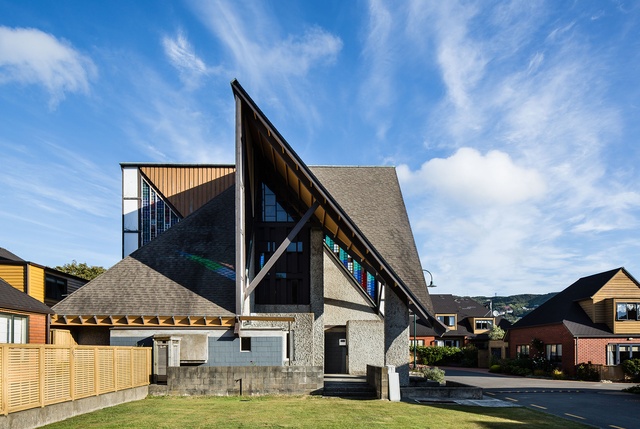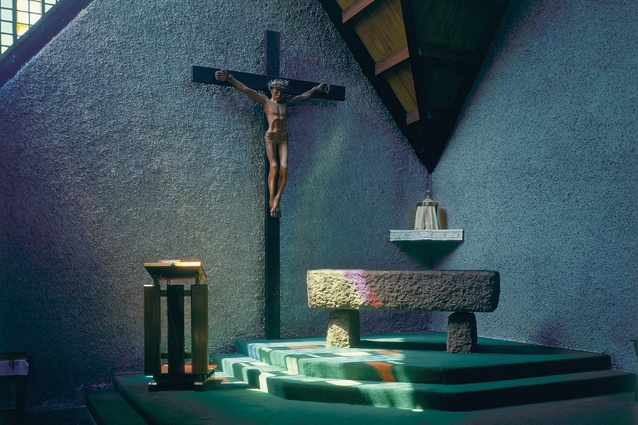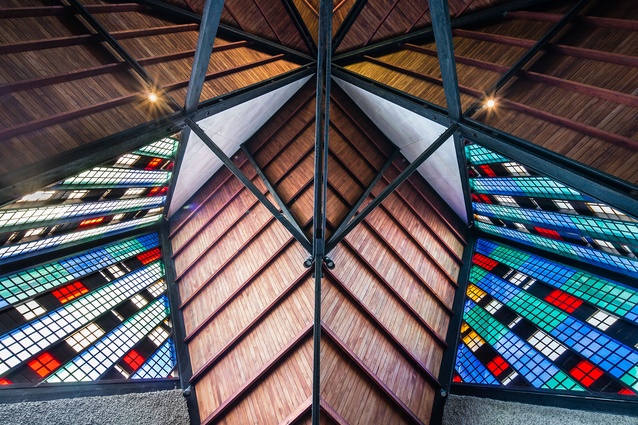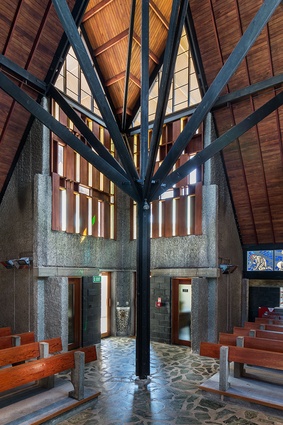Futuna Chapel exhibition a rare insight into architectural taonga
Futuna Chapel opens its doors for a multi-sensory exhibition 29 October–17 November of documents, artefacts and related art works that explore the working relationships and creative thinking of the architect, John Scott; artist, Jim Allen, and the religious community that brought Futuna Chapel into being.
Entitled ‘From the Archive: The Making of Futuna’, the exhibition uses words, drawings, images, sound and physical objects to explore the commissioning, architectural design, art works and the construction of Futuna Chapel in Karori, Wellington. The work was produced by architect John Scott (9 June 1924–30 July 1992) and artist Jim Allen (22 July 1922–9 June 2023) and constructed by a dedicated team of voluntary lay brothers between 1957 and 1961.
“The Futuna Exhibition reveals the extent and significance of the collaboration between Chapel architect John Scott, Chapel artist Jim Allen and the building brothers,” says Futuna Chapel Trust Chairperson and exhibition organiser, Nick Bevin.
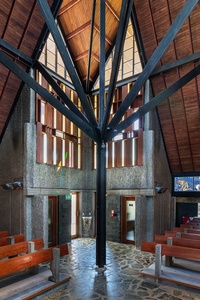
Co-curated by Chapel trustee, poet and artist Gregory O’Brien along with Christina Barton (former Director of Te Pātaka Toi Adam Art Gallery), the exhibition will also feature a wide array of objects, many of which could be thought of as relics, says the Futuna Trust.
“Visitors will find out how Kiwi boot polish, wooden door handles, a chunk of serpentine and a strange rectangular sculpture are all a part of the Futuna story which is still very much ongoing”, says Gregory.
He describes the process of developing the exhibition as investigating a place and a history that is still alive and evolving. “In bringing together drawings, art, photographs, video footage and objects, we didn’t feel like archivists digging around in the distant past. The ideas and concepts at the heart of Futuna have become more relevant and vital as the decades have passed. Working on the exhibition, Tina and I have, to borrow a phrase from Ezra Pound, “gathered from the air a live tradition”.
The architectural records of John Scott consisting of approximately 300 photographs, 10,000 drawings, and 10,000 pages of business files were donated to the Alexander Turnbull Library by the Scott whānau in 2020. By the end of 2024 this collection will be fully catalogued and digitised and made available for researchers to explore and access.
“We’ve been very fortunate to work with Alexander Turnbull Library and the Scott whanau in the enabling of this work,” says Nick.
Part of the Wellington Heritage Festival, The Making of Futuna exhibition will be complemented by a series of floor talks and public talks that will expand on the creative lives and influence of the works of both men.

“We are thrilled to have secured an exceptional line up of speakers; James Charlton, Puawai Cairns, Barbara Fill, Francis Martin, Chris Moller, and of course Gregory O’Brien and Christina Barton. The depth of coverage from the psychedelic intent of Jim Allen’s work to the legal aspects of protecting Futuna, as well as the broader areas of heritage exploration and the creative lives of these extraordinary men will make for fascinating listening,” says Nick.
“Architect John Scott and artist Jim Allen are both towering figures in this country’s recent history. Their influence and inspiration and the dedicated efforts of the building brothers will live on in the work of subsequent generations.”
The Making of Futuna exhibition will run from 29th October–17 November, 11am-3pm daily except Sundays 11:00 am–1:00 pm (Saturday 16 November opening hours are 1:30 pm–3:00 pm) at Futuna Chapel, Karori.
The official opening of ‘From the Archive: The Making of Futuna’ is on Tuesday 29th October at 6:00 pm.
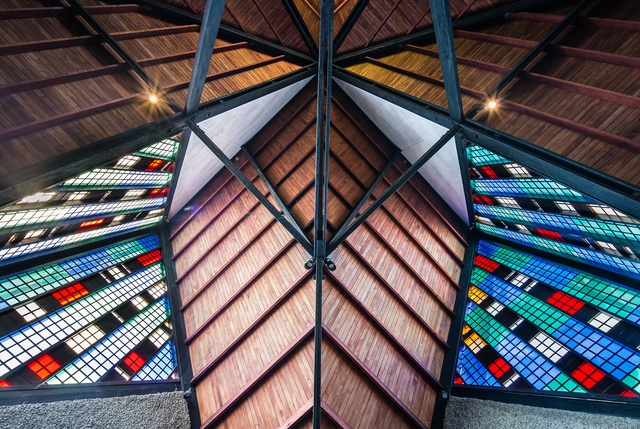
Entry is by koha. Floor talks will be held on Saturdays 2–3:00 pm and public talks on Sundays 2–4:00 pm. Information about bookings are available on Eventbrite at Futuna Chapel Trust Events or on the Futuna Chapel website.
This exhibition is presented by the Futuna Chapel Trust in conjunction with the Alexander Turnbull Library and with the support of Dulux, FL Bone Hardware Merchant, Heritage Studios, Molloy Joinery, Riegers Print and Copy and The Warren Trust.
Futuna Chapel is listed as a Category I building with Heritage New Zealand and is operated by the Futuna Chapel Trust.
